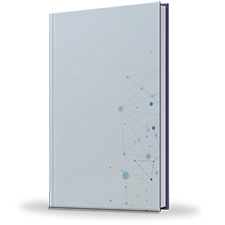Granisetron Market Overview 2030:
Granisetron is a serotonin 5-HT3 receptor antagonist used as an antiemetic to treat nausea and vomiting following chemotherapy and radiotherapy. Its major effect is to reduce the activity of the vagus nerve, the nerve that activates the vomiting center in the medulla oblongata. It controls serotonin from binding to 5-HT3 receptors in the small intestine and prevents the likelihood of nausea and vomiting after chemo or radiation therapy. It does not have much effect on vomiting due to motion sickness. This drug does not have any effect on dopamine receptors or muscarinic receptors. Granisetron is a well-tolerated drug with few side effects. Headache, dizziness, and constipation are the most commonly reported side effects associated with its use. No significant drug interactions reported with this drug's use. It is broken down by the liver's cytochrome P450 system and it has little effect on the metabolism of other drugs broken down by this system.
Granisetron was developed by chemists working at the British drug company Beecham in around 1988 (contradictory) and is available as a generic. It is produced by Roche Laboratories under the trade name Kytril. The drug was approved in the UK in 1991 and in U.S. in 1994 by the FDA. Granisetron is metabolized slowly by the liver, giving it a longer than average half-life. One dose usually lasts 4 to 9 hours and is usually administered once or twice daily. This drug is removed from the body by the liver and kidneys. It was patented in 1985 (contradictory) and approved for medical use in 1991.
COVID-19 Impact Analysis
- COVID-19 is an infectious disease that originated in the Hubei province of the Wuhan city in China in late December. The highly contagious disease, caused by a virus, severe acute respiratory syndrome coronavirus 2 (SARS-CoV-2), is transmitted from human to human. Since the outbreak in December 2019, the disease has spread to almost 213 countries around the globe with the World Health Organization declaring it a public health emergency on March 11, 2020.
- Pharmaceutical companies together with governments around the globe are working to address the COVID-19 outbreak, from supporting the development of vaccines to planning for medicine supply chain challenges. Currently, around 115 vaccine candidates and 155 molecules are in the R&D pipeline. Moreover, commonly used drugs such as hydroxychloroquine have witnessed a dramatic surge in demand for the management of COVID-19.
- Such high demand for these drugs has presented huge opportunities for manufacturers of COVID-19 management drugs, as many developed countries are facing shortage of these drugs. Thus, the pharmaceutical and biotechnology industries are expected to witness a significant growth in the future owing to the demand for vaccine and treatment drugs for COVID-19. This, in turn, is expected to have a significant impact on the granisetron market.
- The World Health Organization (WHO) on January 30, 2020, declared COVID-19 outbreak a public health emergency of international concern. Granisetron manufacturing and distributing companies have been affected by COVID-19 to a limited extent, owing to shut down in various COVID-19 affected countries and rise in number of healthcare workers falling ill in the wake of the COVID-19 pandemic, leading to supply shortage.
Top Impacting Factors
- Rise in prevalence of cancer cases is likely to be the key driver for the granisetron market in upcoming years.
- The severe side effects of granisetron include anxiety, trouble sleeping, and drowsiness, which can restrain the market growth.
- Increase in demand for personalized medicine and OTC products is expected to bring in opportunity for granisetron market.
Market Trends
High healthcare expenditure per capita and favorable medical reimbursement policies in developed nations have contributed to the growth of the granisetron market. Moreover, increase in applications of these drugs in post-operative surgical procedures for the prevention and treatment of nausea and vomiting is likely to boost demand during the forecast period.
Nearly 70% to 80 % of cancer patients are affected by chemotherapy-induced nausea and vomiting (CINV) and 50% to 80% patients are affected by radiation-induced nausea and vomiting (RNIV). Increase in number of patients undergoing chemotherapy and radiation therapy owing to well-established health care facilities, high healthcare expenditure per capita, and favorable medical reimbursement policies in developed nations have contributed to the growth of the granisetron market.
Increased R&D investments by pharmaceutical and biotechnology companies for the development of highly effective and efficient drugs with minimum side effects is projected to fuel demand for granisetron market during the forecast period.
Key Benefits of Report
- This report presents the detailed analytical depiction of the granisetron market along with current trends, opportunities and future estimates for the investment in market.
- The report presents information related to the key drivers, restraints, and opportunities in the market.
- The current market is analyzed to emphasize the granisetron market.
- Porter’s five forces analysis illustrate the potency of buyers and suppliers in market.
- The report provides detailed analysis of the granisetron market based on the market competition and how it will take shape in upcoming years.
Granisetron Market Report Highlights
| Aspects | Details |
| By Product Type |
|
| By Application |
|
| By Distribution Channel |
|
| By Region |
|
| Key Market Players | Heron Therapeutics, Fresenius Kabi, Aristo Pharmaceuticals Pvt Ltd., Teva Pharmaceuticals, Wockhardt, Cipla Ltd., Sandoz, Hikma Pharmaceuticals, Kyowa Kirin, Mankind Pharma Ltd. |
Loading Table Of Content...



